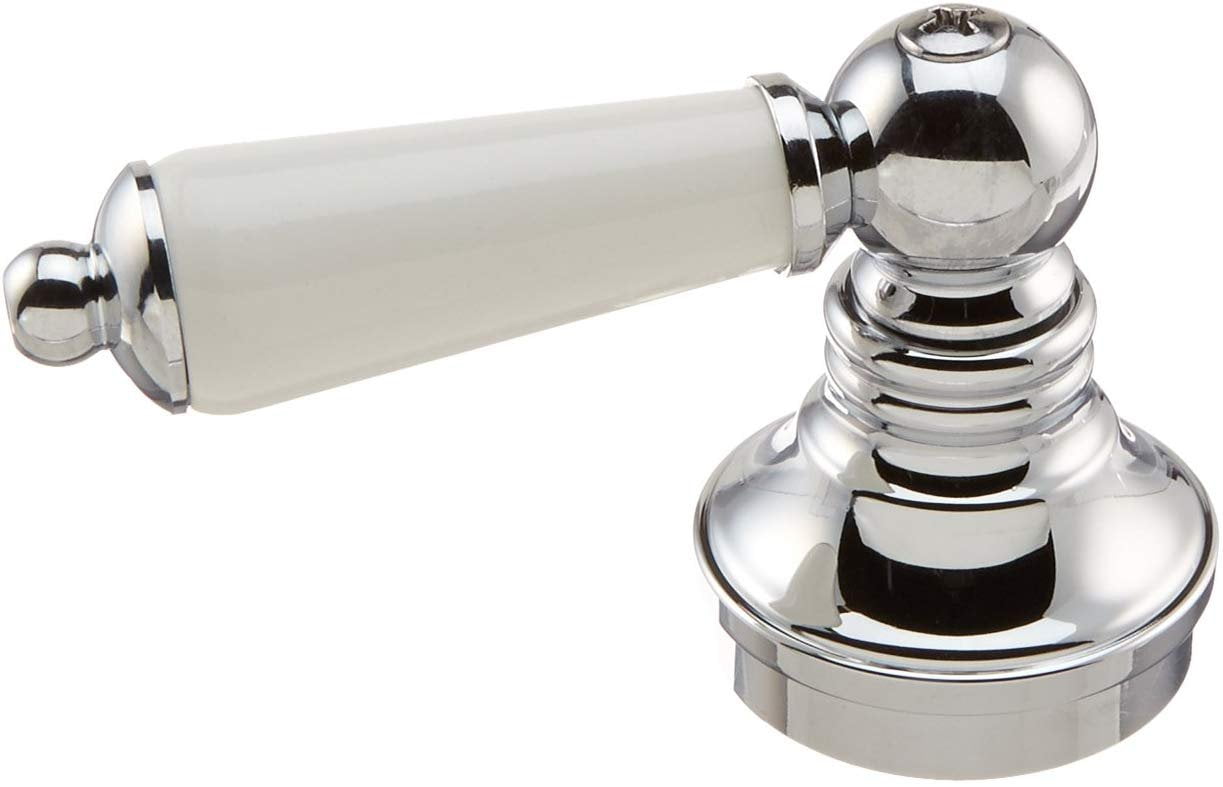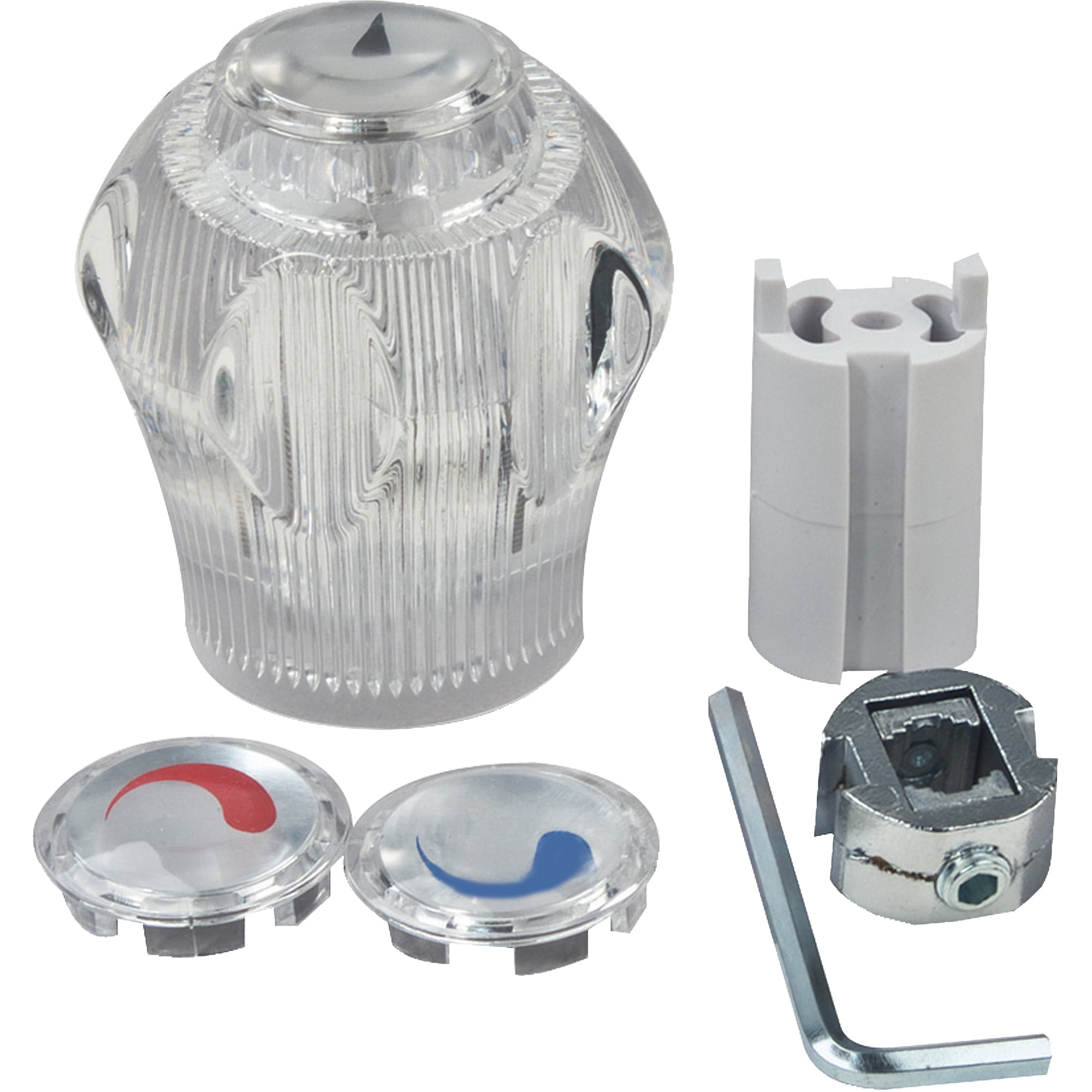Bathroom Sink Faucet Handle Replacement Overview

Bathroom sink faucet handle replacement – Bathroom sink faucet handles are essential components that control the flow and temperature of water. Over time, these handles can become worn, damaged, or outdated, affecting the functionality and aesthetics of the sink. Replacing old or damaged faucet handles is crucial for maintaining a well-functioning and visually appealing bathroom.
As you tackle the replacement of your bathroom sink faucet handle, you might find yourself pondering the optimal dimensions of your sink. Wonder no more, for the average bathroom sink size holds the answers you seek. With this knowledge, you can ensure that your new faucet not only functions flawlessly but also complements the aesthetics of your bathroom haven.
Frequency of Faucet Handle Replacements
Research indicates that faucet handle replacements are a common household maintenance task. According to a survey conducted by the National Kitchen and Bath Association, approximately 25% of homeowners replace their faucet handles every 5-10 years. Factors such as water quality, usage frequency, and handle material can influence the replacement frequency.
Amidst the cascade of renovations, replacing a bathroom sink faucet handle takes center stage. Whether you’re looking to upgrade the aesthetics or address a pesky leak, it’s a task that demands precision. If your bathroom’s dimensions allow, consider pairing your new faucet with a single sink 48 inch bathroom vanity.
Its ample surface area provides a generous canvas for your grooming essentials while complementing the refreshed faucet handle, transforming your bathroom into a sanctuary of style and functionality.
Benefits of Replacing Faucet Handles
- Improved Functionality: Replacing worn or damaged handles ensures smooth operation and precise control of water flow and temperature.
- Enhanced Aesthetics: New faucet handles can update the look of the bathroom, complementing the overall design and color scheme.
- Water Conservation: Leaky or loose handles can waste water. Replacing them with new ones can help conserve water and reduce utility bills.
- Increased Hygiene: Worn or corroded handles can harbor bacteria. Replacing them promotes a cleaner and more hygienic bathroom environment.
Types of Bathroom Sink Faucet Handles

Bathroom sink faucet handles come in a variety of designs and styles, each with its own advantages and disadvantages. The three most common types of handles are lever, knob, and cross handles.
Lever handles are the most popular type of faucet handle. They are easy to use and can be operated with one hand. Lever handles are also available in a wide range of styles, from traditional to contemporary.
Knob handles are another popular type of faucet handle. They are typically round or oval in shape and are operated by turning them. Knob handles are often found on traditional-style faucets.
Cross handles are a less common type of faucet handle. They are typically made of two handles that are crossed in the center. Cross handles are often found on contemporary-style faucets.
Advantages and Disadvantages of Different Handle Types, Bathroom sink faucet handle replacement
- Lever handles are easy to use and can be operated with one hand. They are also available in a wide range of styles.
- Knob handles are also easy to use, but they may not be as comfortable for people with arthritis or other hand problems.
- Cross handles are less common, but they can add a unique style to a bathroom. They may not be as easy to use as lever or knob handles, however.
Handle Designs and Styles
Faucet handles come in a wide range of designs and styles. Some of the most popular designs include:
- Traditional handles are typically made of metal or porcelain and have a classic, elegant look.
- Contemporary handles are often made of sleek, modern materials such as stainless steel or acrylic.
- Designer handles are unique and stylish handles that can add a touch of personality to a bathroom.
When choosing a faucet handle, it is important to consider the style of your bathroom and the ease of use. You should also consider the size and shape of your sink and the amount of space you have around it.
Step-by-Step Replacement Guide

Replacing a bathroom sink faucet handle is a relatively simple task that can be completed in a few minutes. By following these step-by-step instructions, you can easily replace your old handle with a new one.
Removing the Old Handle
1. Turn off the water supply to the faucet.
2. Use a screwdriver to remove the set screw that is located on the side of the handle.
3. Once the set screw is removed, pull the handle straight up to remove it from the faucet.
Installing the New Handle
1. Insert the new handle onto the faucet.
2. Tighten the set screw using a screwdriver.
3. Turn on the water supply to the faucet and check for leaks.
Potential Challenges and Troubleshooting Tips
If you encounter any challenges while replacing the faucet handle, here are a few troubleshooting tips:
* If the set screw is stuck, you can try using a penetrating oil to loosen it.
* If the handle is difficult to remove, you can try using a pair of pliers to gently pry it off.
* If you notice any leaks after installing the new handle, you can try tightening the set screw further.